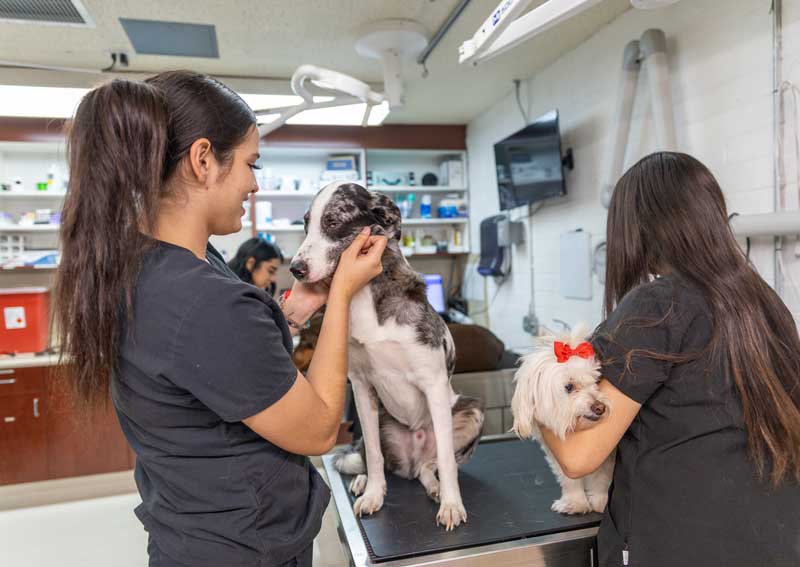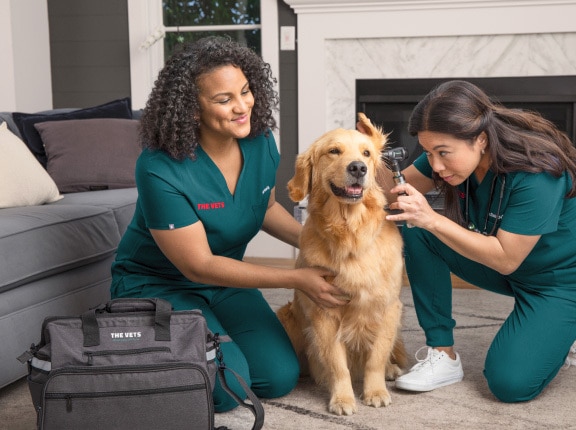Everything About Vet Surgical Procedure: Comprehending the Significance of Expert Treatment for Your Pet dogs
Veterinary surgical procedure is an important component of family pet health care. It encompasses numerous treatments, from regular elective surgeries to urgent treatments. Comprehending the complexities of these surgeries can assist family pet proprietors make educated choices. The preparation, implementation, and recovery stages are essential for making certain the health of animals. With proper knowledge, owners can navigate the intricacies of vet care. What variables should be considered before a pet goes through surgery?
Types of Veterinarian Surgeries
When a pet needs medical intervention, recognizing the numerous sorts of vet surgeries can assist family pet proprietors make educated choices. Vet surgical treatments can be extensively categorized right into three primary kinds: optional, urgent, and emergency situation surgical treatments. Optional surgeries, such as spaying or neutering, are planned procedures that are not promptly lethal. Immediate surgical treatments, like those for foreign body removal, have to be done soon however are not serious in the moment. Emergency situation surgeries, such as those resolving severe trauma or inner blood loss, are vital and need instant attention.Additionally, surgeries can differ in intricacy, varying from minimally invasive laparoscopic procedures to extra considerable open surgical treatments. Each type of surgical treatment carries its own risks and recuperation processes. Comprehending these classifications permits family pet owners to engage in significant discussions with vets, bring about much better results for their beloved pet dogs.
Getting ready for Your Pet dog's Surgical procedure
Planning for a family pet's surgical treatment entails a comprehensive checklist to ensure all fundamentals are covered. Reliable communication with the veterinarian is essential for comprehending the procedure and any necessary pre-operative actions - 24 hour vet near me. Furthermore, having clear post-operative care guidelines will certainly aid owners provide the most effective support for their recovering family pets
Pre-Surgery List Essentials
Assuring a smooth surgical experience for an animal calls for cautious preparation and focus to information. A pre-surgery checklist is necessary for pet dog proprietors to comply with. First, validating the arranged surgical treatment day and time is essential. Owners ought to also validate that their pet has not eaten according to the veterinarian's directions, commonly for 8-12 hours prior to surgical treatment. Collecting necessary clinical documents, consisting of inoculation history, is crucial for the vet's evaluation. It is likewise recommended to prepare a comfy area in the house for the family pet's recuperation after surgical treatment. Ultimately, proprietors need to have a prepare for transport to and from the vet center, seeing to it that the pet dog is safe and comfy throughout the trip. Adhering to these actions can substantially enhance the surgical experience.
Connecting With Your Vet

Reliable communication with the vet is crucial for an effective surgical experience for pets. Owners ought to be prepared to discuss their pet dog's clinical history, consisting of any pre-existing conditions, medicines, and allergic reactions. This information aids the vet analyze risks and customize the medical strategy accordingly. In addition, pet dog proprietors must ask questions concerning the procedure, anesthetic, and anticipated results to guarantee they fully recognize the procedure. Making clear any kind of uncertainties can relieve anxiety for both the pet dog and the proprietor. It is additionally important to interact any behavior changes or concerns observed in the animal leading up to the surgical treatment. Ultimately, clear discussion promotes trust and partnership, guaranteeing that family pets receive the most effective possible treatment during their surgical trip.
Post-Operative Care Instructions
After talking about the surgery with the veterinarian, pet dog owners should concentrate on post-operative treatment instructions to facilitate a smooth recovery for their animals. These directions commonly include keeping track of the medical website for indicators of infection, such as inflammation or discharge. Pets might require to be kept one's cool and confined to avoid too much movement that might interrupt recovery. Pain monitoring is crucial, so owners ought to adhere to the veterinarian's support on carrying out medications. Additionally, dietary restrictions might be recommended to avoid stomach distress. Routine follow-up appointments are very important to guarantee correct healing and attend to any worries. By adhering to these post-operative treatment directions, pet dog proprietors can significantly add to their pet's healing and general wellness.
The Surgical Process Explained
The surgery for family pets includes vital steps that guarantee their security and recuperation. Pre-surgery preparations are necessary for reducing dangers, while post-operative care guidelines play a crucial function in promoting recovery. Recognizing these parts aids family pet owners navigate the surgical experience much more successfully.
Pre-Surgery Preparations
Prior to a family pet goes through surgical procedure, several important preparations should happen to guarantee a risk-free and effective procedure. A comprehensive veterinary examination is necessary to analyze the family pet's general health and wellness and identify any possible dangers. This may consist of blood tests, imaging, or other diagnostics. The veterinarian will also discuss anesthesia choices tailored to the pet dog's certain needs. In addition, pet dog owners are typically instructed to hold back food and water for a specified time before surgical procedure to lessen the danger of complications throughout anesthesia. It is very important for owners to offer a total case history, including any kind of drugs or allergies, making certain the surgical group has all essential details. Appropriate interaction and adherence to pre-surgery guidelines can greatly boost the result of the treatment.
Post-Operative Treatment Guidelines
Correct post-operative treatment is important for ensuring a family pet's healing complying with surgery. After the treatment, pets need to be monitored carefully for any indications of complications, such as extreme bleeding, swelling, or unusual actions. It is essential to comply with the vet's instructions concerning medicines, consisting of painkiller and prescription antibiotics. Pets need to be maintained in a quiet, comfy setting to reduce stress and anxiety and promote healing. Restricting activity is crucial; short, leashed strolls may be needed, but jumping or running must be prevented. Routine follow-up appointments ought to be scheduled to examine the recovery process. Additionally, the surgical website needs to be maintained tidy and dry, with any kind of indications of infection reported to a veterinarian promptly. Sticking to these guidelines improves healing outcomes.
Anesthesia and Pain Management
Efficient anesthesia and pain management are vital components of veterinary surgical procedure, guaranteeing that pet dogs remain comfortable and risk-free throughout the procedure. Veterinarians assess each pet's specific requirements, taking into account elements such as age, weight, wellness condition, and the kind of surgical treatment being performed.Anesthesia protocols commonly consist of a mix of pre-anesthetic drugs, induction representatives, and inhalant anesthetics, enabling specific control over the animal's level of consciousness. Monitoring throughout surgical procedure is important; veterinarians continually observe important indicators to resolve any potential difficulties promptly.Pain monitoring techniques might include opioids, non-steroidal anti-inflammatory medications (NSAIDs), and local anesthetics, tailored to the animal's certain situation. This complex strategy assists reduce discomfort and promotes a smoother medical experience. By prioritizing effective anesthesia and pain monitoring, veterinary specialists boost the overall well-being of animals going through medical treatments, ensuring they obtain the greatest criterion of treatment.
Post-Operative Care and Recovery
Adhering to surgical treatment, the why not try these out emphasis moves to post-operative treatment and recovery, which is necessary for making certain an animal's safe go back to normal tasks. During this period, family pets require a peaceful, comfy atmosphere to help healing. Proprietors ought to carefully check their family pets for any kind of indications of pain or unusual behavior.Veterinary standards commonly include details instructions associated with medicine management, wound care, and nutritional modifications. It is important to abide by these referrals to minimize difficulties and promote recovery. Pet dogs may require to be limited from energetic tasks, such as running or jumping, during their recuperation period (emergency vet bellingham).Regular follow-up appointments with the veterinarian enable tracking of the animal's progression and prompt changes to the care strategy. Supplying emotional support and companionship can additionally boost an animal's recuperation experience, helping to alleviate anxiety and stress and anxiety. Generally, persistent post-operative care plays a considerable function in achieving a successful healing
Acknowledging Difficulties After Surgical Treatment
Just how can pet dog proprietors recognize complications after surgical treatment? Recognition of certain signs is important for making certain the well-being of family pets throughout healing. Common indicators include excessive swelling, redness, or discharge at the medical website, which might symbolize infection. Additionally, relentless discomfort, shown by yawping or hesitation to relocate, should motivate instant attention. Adjustments in cravings or water consumption can likewise suggest difficulties; a decline in these habits might indicate discomfort or distress.Moreover, pet dog owners must monitor their family pets for any kind of unusual behavior, such as lethargy or difficulty breathing, as these can be indicators of major problems. Throwing up or looseness of the bowels following surgical treatment may require immediate veterinary assessment. Recognizing these difficulties early can considerably affect a pet dog's healing procedure, stressing the value of alertness and prompt communication with a veterinarian for any kind of concerning signs and symptoms.
The Role of Vet Professionals in Surgical Treatment
Vet professionals play a crucial duty in making certain the safety and success of surgeries for animals, especially adhering to surgery when keeping track of and treatment are critical. These professionals consist of vets, vet service technicians, and assistance staff, all of whom contribute specialized abilities to the surgical process.Before surgery, veterinarians carry out discover this thorough examinations to analyze the animal's wellness, making sure that any type of hidden conditions are handled. Throughout the procedure, the medical group gives anesthesia, keeps sterilized settings, and monitors essential indications, all crucial for reducing risks.Post-operative care is equally significant; veterinary professionals observe for difficulties, handle discomfort, and overview proprietors on healing methods. Their competence enables them to recognize early indications of distress or infection, guaranteeing prompt intervention. Eventually, the joint initiatives of vet professionals in medical care cultivate a safe setting, promoting the health of pet dogs throughout the medical trip.

Regularly Asked Concerns
Just how Do I Pick the Right Veterinary Specialist for My Pet?
Selecting the ideal vet surgeon entails looking into credentials, reading evaluations, and reviewing the facility's setting. It is important to assess the doctor's experience with certain procedures and their communication design when choosing.
What Prevail Misconceptions Concerning Veterinarian Surgeries?
Common misunderstandings regarding veterinarian surgical procedures include beliefs that they are constantly risky, unneeded, or just for emergency situations. Many family pet proprietors take too lightly the benefits of precautionary procedures and the ability associated with veterinary surgical care.
Exactly How Much Will My Pet's Surgical treatment Price?
The cost of a pet dog's surgical treatment can differ substantially based upon aspects such as the kind of treatment, the veterinarian's experience, and geographical location (animal emergency care bellingham). Usually, expenditures range from a few hundred to a number of thousand dollars

Can My Family Pet Consume Before Surgical Procedure?
Prior to surgical treatment, it is generally recommended that animals avoid from consuming for a certain duration. This fasting assists lower the risk of difficulties during anesthesia. Proprietors should consult their vet for exact instructions tailored to their family pet's requirements.
Suppose My Animal Has Pre-Existing Wellness Issues?
When a pet dog has pre-existing health and wellness conditions, it's important for the vet to examine these factors prior to surgical treatment. This examination guarantees find out here ideal precautions are taken, minimizing risks and enhancing the pet's overall safety during the procedure.